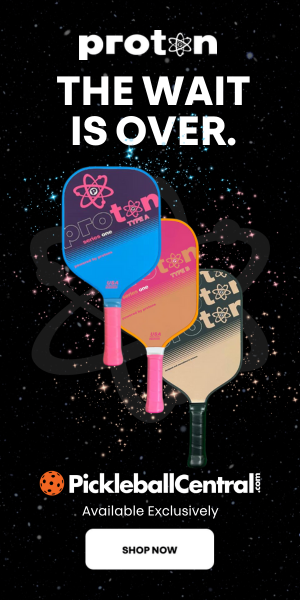Beginner Pickleball Player? These Paddles are for You
Last Edited
Jun 06 2024
Category
Gear
I just got into pickleball, or I’m about to play. Which paddle should I buy?
If you want the best value for your money – really, who doesn’t? – then this question can only be answered accurately once a couple others are answered first:
- How long do you see yourself playing for?
- How much money could you see yourself spending?
- Do you have any physical concerns like arthritis or weaker wrists?
We’ll provide some context to help you shop for paddles based on all of those core questions…but if you just want to see our paddle selections, skip to the end.
Just remember: as you go up in skill level, there’s going to be plenty of noise out there about spin, control, power, etc. – and if you’re really a beginner pickleball player, none of that matters.
What matters right now is that you find a well-made paddle that will last you as long as it needs to and feels right in your hand. Now, let’s help you find it.
Avoid The Vicious Cycle
Most new players experience a vicious cycle that goes something like this:
- I’m not going to buy a paddle. I’ll just borrow someone else’s.
- Damn, that was fun. Guess Amazon gets my $20 after all.
- *Plays a few more times* This paddle sucks. Guess Amazon gets $60 more.
Now you have two paddles and you’ve dropped about 80 bucks.
Maybe your “next step” paddle was great, maybe not. But eventually, you end up wishing you’d just spent a little more in the first place to get something that lasts (and/or fits your play style).
So we recommend you (or the person you’re convincing to play) skip all the steps up to this point and spend the money on a great paddle at a price point that isn’t as steep as the “die hard” paddles.
Of course, if you’ve already done all of that but still want to find a well-made paddle that’ll suit your play style, the following tips are just as useful.
If You’re About to Play Pickleball for the First Time…
We’d love to sell you any of the beautiful, well-made paddles below…but realistically, they may be out of your budget if you’re just trying pickleball because someone dragged you to it and you don’t even know if you like it yet.
It all depends on how long you can see yourself playing for, and while that may change depending on how your first experience goes, it’s safe to say you’ll probably enjoy playing at least a little bit if you’ve ever played ping pong, tennis, or other racquet sports before.
For $100, you can buy this Bantam TS-5 from Paddletek.
It’s definitely more expensive than the paddles you see at Target (which, to be fair, aren’t terrible if you’re really unsure about the game), but for the extra cash, you’re buying a dependably-good paddle that fits most play styles right out of the gate:
- It’s shape is forgiving for those with ping pong experience
- It’s handle length is just-right: not too long to trip you up when you’re just learning backhand groundstrokes, but not too short as to feel unnatural in the hand
- It’s lightweight but still allows you to generate power during your very first hands battle
If You’re a Tennis Player…
You’re looking for a paddle to help you transition from tennis, which is very groundstroke- and swing-heavy.
While the swinging motion in pickleball is far more compact than in tennis, you may want to consider the value of having MORE paddle in your hands.
Think of length as an asset:
- Look for handle lengths of at least 5 inches or more, if possible – this’ll make your groundstrokes (and two-handed backhands) feel more secure
- The length of the paddle’s face is also important for tennis players; look for an elongated shape that will “extend your arms” a bit during quick exchanges
For under $150, you can grab the Electrum Model E used by many on the pro tours, or the Selkirk AMPED Invikta, designed specifically for (soon-to-be former) tennis players.
For Those with Mobility Challenges
Pickleball is pretty accessible for those with mobility issues, wrist, arm, and shoulder injuries, etc.
While you should probably consult your doctor before strenuous exercise, it seems only logical you’ll want a paddle that works with you, not against you.

Look for lightweight (less than 8oz if possible) paddles with a “standard” paddle face shape (see above). This limits its “swing-heaviness,” dampening the strain on your arm and wrist over extended use.
The Holbrook Mav Pro in 13mm is light, but its thin core still packs a punch of power. For similar reasons (and a similar price), we also recommend the Paddletek Bantam TS-5.















